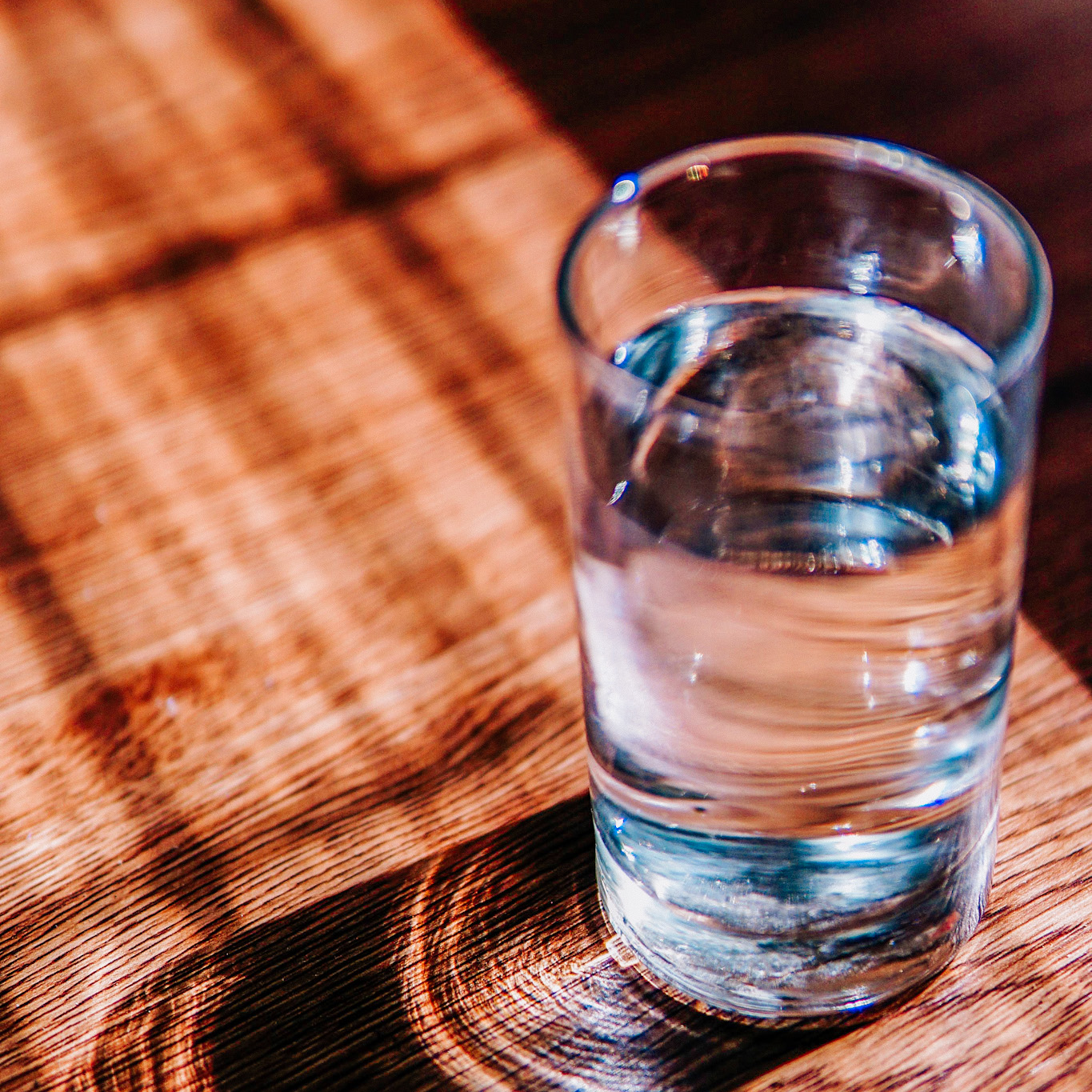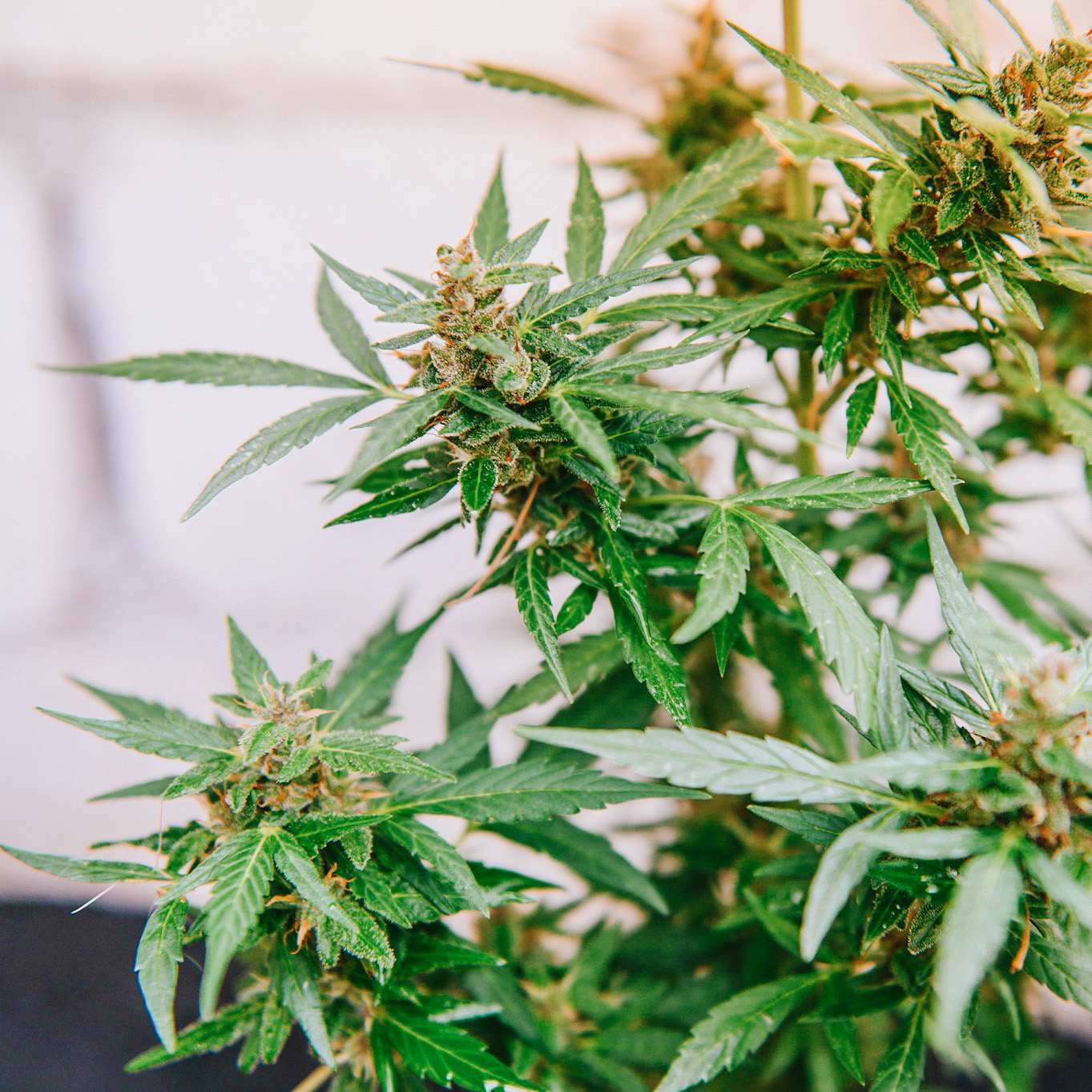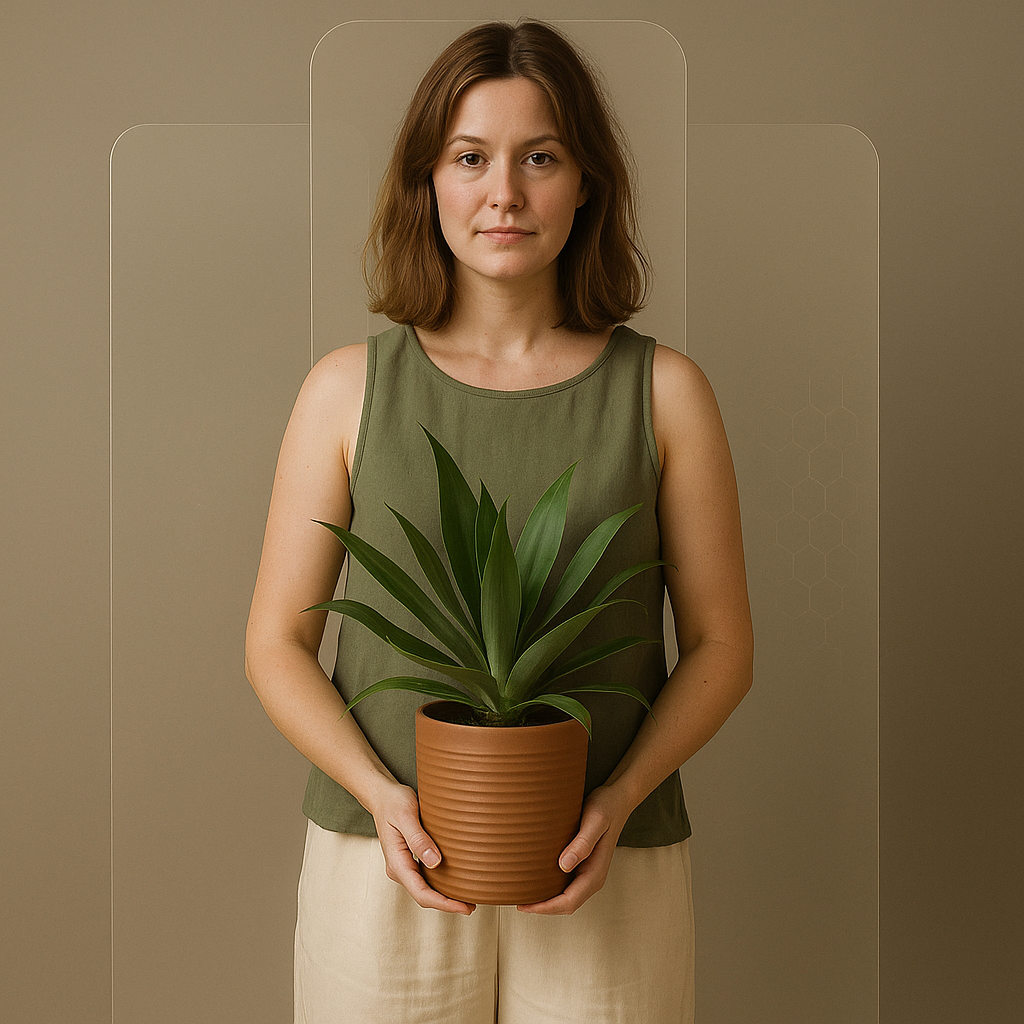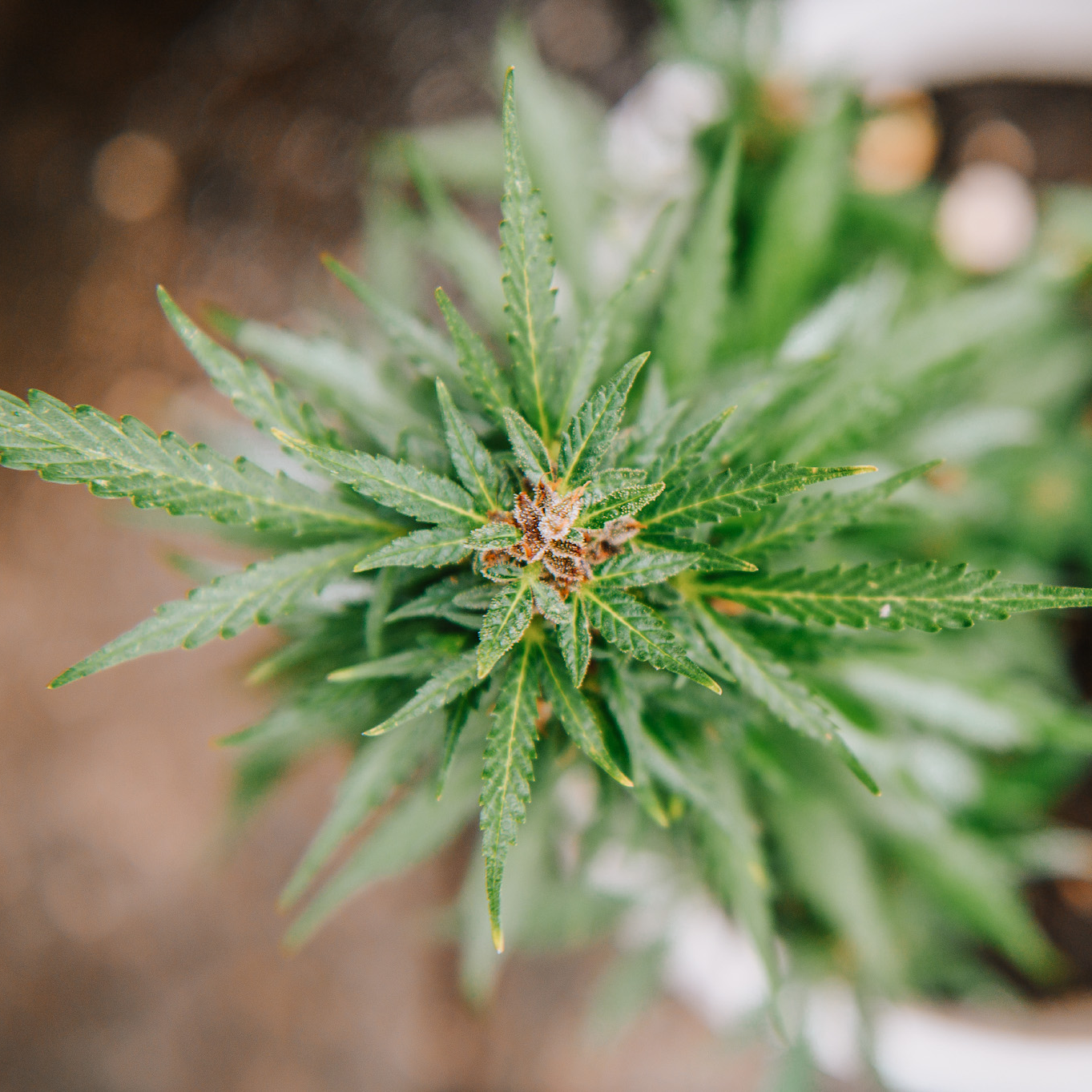Moisture... This eternal question of moisture.

By far the most common question we get is the following - “I have very dry skin. How can I solve this?”
There are two different ways for skin care companies to tackle this constant and recurring challenge. One way is to create products that contain substances that provide a "moisture boost". For example, you take a combination of hyaluronic acid, sodium hyaluronate and/or glycerin and add these to skin care products. When you then apply these products to the skin, it will become hydrated in the short term. Notice the words - short term.
The dilemma with this short-term solution is that it only puts out a fire that has already started and does not prevent the reason why the fire started in the first place. You also teach the skin that moisture constantly comes from outside and that it can therefore stop producing the amount of moisture it naturally needs.
Managing this issue in this short-term way is very lucrative. As a company, you can sell a range of different skin care products that seem to give a lot of effect, very quickly. But. Does this really solve the problem in the long run or is it just postponed?
Is there another way to handle this challenge? To give the answer a fair chance, you have to start in the opposite direction. Instead of asking "how do I create a quick-fix solution for my dry skin?" then you should ask yourself the question "why has my skin lost the ability to create enough moisture on its own?".
There are a variety of reasons why you get dry skin. One of the main causes is something called transepidermal water loss (TEWL).
Transepidermal water loss means that fluid/moisture in the body/skin leaks out through the epidermis (top skin layer). Why then does this happen? Mainly it is because we have an insufficient amount of tight junctions (t-junctions) between the cells. These t-junctions are the bonds that hold the cells tightly together. If we have a large amount of t-junctions, the moisture stays inside the skin, but if we have a lack of t-junctions, we get skin that is poor in moisture.
T-junctions are formed naturally by the cells when they feel "safe" and stable. Safety occurs when we have a good microbial diversity of microbes (bacteria, viruses, fungi, protista etc.) that "dock" on the skin cells.
Then the next question arises - "how do we create such a good condition for the skin to have as good a microbial diversity as possible?". The short-term solution is to add external probiotics. The long-term sustainable solution is to improve the conditions for the microbes that we already have on and in the skin. The absolute best way to create these good conditions is to improve the quality of the food that the good microbes eat - the sebum.
Sebum is produced by the skin's sebaceous glands and sent out to the skin to keep it healthy. If we have balanced sebum production and good sebum quality, these oils will be used as food for the skin's good microbes. If, on the other hand, we have too much sebum production with too little sebum quality, the oils can be used as food for pathogens (bad microbes) such as staph aureus ("the eczema bacteria") or cutibacterium acnes ("the acne bacteria"). What is responsible for the function of the sebaceous glands is its endocannabinoid receptors. If we have a balanced endocannabinoid system, we have good sebum production.
Besides that we have to maintain the moisture that our skin itself produces, we also have to find a way to increase/maintain the skin cells' natural production of moisturizing substances. If the skin cells work correctly, they act as our own moisture factories. Two of the substances that skin cells produce are hyaluronic acid (HA) and lactic acid.
When the skin cells feel safe, they don't just produce a greater number of t-junctions. They also increase their own production of hyaluronic acid and lactic acid. Therefore, once again, sebum production is the basis for the skin's own production of moisture.
A third reason why we get dry skin is a lack of function in our skin's keratinocytes. Our skin's keratinocytes are the dominant cell type in the epidermis (top layer of skin). These cells produce keratin and are responsible for the formation of our skin barrier by manufacturing and secreting lipids.
Even the quality and quantity of keratinocytes in our skin is directly regulated by the amount of endocannabinoids that our skin naturally produces to communicate with the cells' endocannabinoid receptors. If we have a lack of endocannabinoids, we have a lack of quality in our keratinocytes. This in turn leads to poorer barrier function and so to skin that "leaks moisture".
The goal to achieve a short- AND long-term moisturized skin is therefore to improve the skin's sebum quality in order to increase the microbial diversity. This increased amount of microbes in turn leads to an increased amount of t-junctions (which retain moisture in the skin) and self-production of hyaluronic acid and lactic acid in the skin cells.
The most important signaling system we have in the skin to improve sebum production, keratinocyte quality, microbial diversity and therefore also hyaluronic acid production in the cells is the endocannabinoid system. If we can achieve balance in this system, we can achieve healthy and hydrated skin.
Unfortunately, a large percentage of Westerners have a deficient function in their skin's endocannabinoid system. There are several different underlying factors for this, but one of the main factors is an overuse of substances that disturb the skin's (and the body's) natural ecosystem.
When the skin's ecosystem is out of balance, it can take a period to "repair" the function we have disturbed. The dilemma with this transition period is that the skin can behave in strange ways. If, for example, you have used moisturizing skin care products for a long period and suddenly stop, the skin has "forgotten" that it has to produce moisture itself. Therefore, the skin initially becomes dry.
The risk at this stage is that you give up and return to your existing skin care routine. But. If you can endure the period it takes for the skin to regain its natural functions, the skin will be healthier and more hydrated than it has ever been before.
Our goal is simple - we want to find the most natural and close to the skin way to strengthen the skin's endocannabinoid system, which in turn is directly responsible for all the skin's functions.
Have we found the ultimate solution yet? Absolutely not, but we are well on our way. We will shortly be launching more skin care and oral products that promote the skin's natural functions. It is only when we succeed in this that we can achieve healthy and long-term moisturized skin.
Finally. Here are five ways you can boost your skin's moisture levels without using skincare:
1. Drink water. Lots of water. According to "The U.S National Academies of Sciences, Engineering, and Medicine" a woman should drink 2.7 liters of fluid/day and men 3.7 liters of fluid/day
2. Eat foods with a lot of liquid - Examples of this are watermelon, celery, plums, berries.
3. Reduce the number of showers/baths per week - One of the main reasons we lose moisture is hot baths and showers. Therefore, try to minimize the number of showers/baths per week.
4. Stop using cleansers and peels that damage the skin's microbial diversity and loosen the skin cells.
5. Use skincare with phytocannabinoids (e.g. CBD and CBG) which strengthen your skin's endocannabinoid system
It will be exciting to follow your skin journey when you follow these tips!
Sincerely,
Christopher Genberg
Founder - Floranie Skincare
Sources:
https://en.wikipedia.org/wiki/Transepidermal_water_loss
https://pubmed.ncbi.nlm.nih.gov/30022486/
https://pubmed.ncbi.nlm.nih.gov/31350927/
https://www.ncbi.nlm.nih.gov/pmc/articles/PMC9654002/
https://www.ncbi.nlm.nih.gov/pmc/articles/PMC3583886/
https://www.ncbi.nlm.nih.gov/books/NBK470464/
https://www.ncbi.nlm.nih.gov/pmc/articles/PMC6536610/
https://pubmed.ncbi.nlm.nih.gov/12815050/




Comments